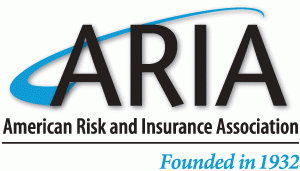This policy is required for papers submitted beginning July 1, 2023, and is strongly encouraged for submissions prior to that date.
In an effort to promote consistent standards and requirements among general-interest journals in the field of insurance economics and risk management, the Journal of Risk and Insurance (JRI) has adopted a data policy that is essentially a reproduction of the policy from the Quarterly Journal of Economics.
It is the policy of JRI to publish papers only if the data used in the analysis are clearly and precisely documented and are readily available to any researcher for purposes of replication. Authors of accepted papers that contain empirical work, simulations, or experimental work must provide to the JRI, prior to publication, the data, programs, and other details of the computations sufficient to permit replication. These will be posted on the JRI data repository. Submissions should include a cover letter in which the Editors are notified if the data used in a paper are proprietary or if, for some other reason, the requirements above cannot be met.
After acceptance and before publication, authors are expected to post their data, programs, and sufficient details to permit replication, to the JRI Dataverse data-sharing repository.
Papers will be posted to First Look after one of these conditions are met:
- The replication package is uploaded to the JRI Dataverse, or
- A specific, step-by-step process for accessing and extracting the data, and replicating the code (e.g. when using NAIC data) is uploaded to the JRI Dataverse, or
- A request for an exemption (e.g. when using proprietary data) is approved by the editor-in-chief. Authors may still be responsible for submitting code and documentation.
Complete instructions will be provided to the author with the acceptance letter.
Our policies differ somewhat for econometric and simulation papers, and for experimental papers.
__________________________________________________________________________
For econometric and simulation papers, the minimum requirement should include the data set(s) and programs used to run the final models, plus a description of how previous intermediate data sets and programs were employed to create the final data set(s). Authors are invited to submit these intermediate data files and programs as an option; if they are not provided, authors must fully cooperate with investigators seeking to conduct a replication who request them. The data files and programs can be provided in any format using any statistical package or software, but a Readme PDF file documenting the purpose and format of each file provided, and instructing a user on how replication can be conducted, should also be provided.
If some or all of the data are proprietary and an exemption from this requirement has been approved by the Editor, authors must still provide a copy of the programs used to create the final results. We require this because the criterion for exemption from the data availability policy is that other investigators can, in principle, obtain the data independently. These authors must also provide in their Readme PDF file details of how the proprietary data can be obtained by others. We know that many authors will use NAIC data. These data are given automatic exemption. The authors, then, will need only to offer the commands/programs used to extract the data from the data set.
__________________________________________________________________________
For experimental papers, we have a more detailed policy, including requirements for submitted papers as well as accepted papers. We normally expect authors of experimental articles to supply the following supplementary materials (any exceptions to this policy should be requested at the time of submission):
- The original instructions. These should be summarized as part of the discussion of experimental design in the submitted manuscript, and also provided in full as an appendix at the time of submission. The instructions should be presented in a way that, together with the design summary, conveys the protocol clearly enough that the design could be replicated by a reasonably skilled experimentalist. For example, if different instructions were used for different sessions, the correspondence should be indicated.
- Information about subject eligibility or selection, such as exclusions based on past participation in experiments, college major, etc. This should be summarized as part of the discussion of experimental design in the submitted manuscript.
- Any computer programs, configuration files, or scripts used to run the experiment and/or to analyze the data. These should be summarized as appropriate in the submitted manuscript and provided in full as an appendix when the final version of a manuscript is sent in. (Data summaries, intermediate results, and advice about how to use the programs are welcome but not required.)
- The raw data from the experiment. These should be summarized as appropriate in the submitted manuscript and provided in full as an appendix when the final version of an accepted manuscript is sent in, with sufficient explanation to make it possible to use the submitted computer programs to replicate the data analysis.
Other information, such as applications to Institutional Review Boards, consent forms, or Web signup and disclosure forms, is expected when it offers transparency about the reasons that certain files are restricted, how the data will be shared, or the commitments that were made to participants. Include each piece of data that should be archived.
__________________________________________________________________________
If the paper is accepted by JRI, the appendices containing instructions, the computer programs, configuration files, or scripts used to run the experiment and/or analyze the data, and the raw data will normally be archived on the JRI Dataverse data-sharing repository before the paper publishes to Early View.
Note: Through a separate initiative from the Office of Science and Technology Policy, federally-funded research must be accessible to the public.
